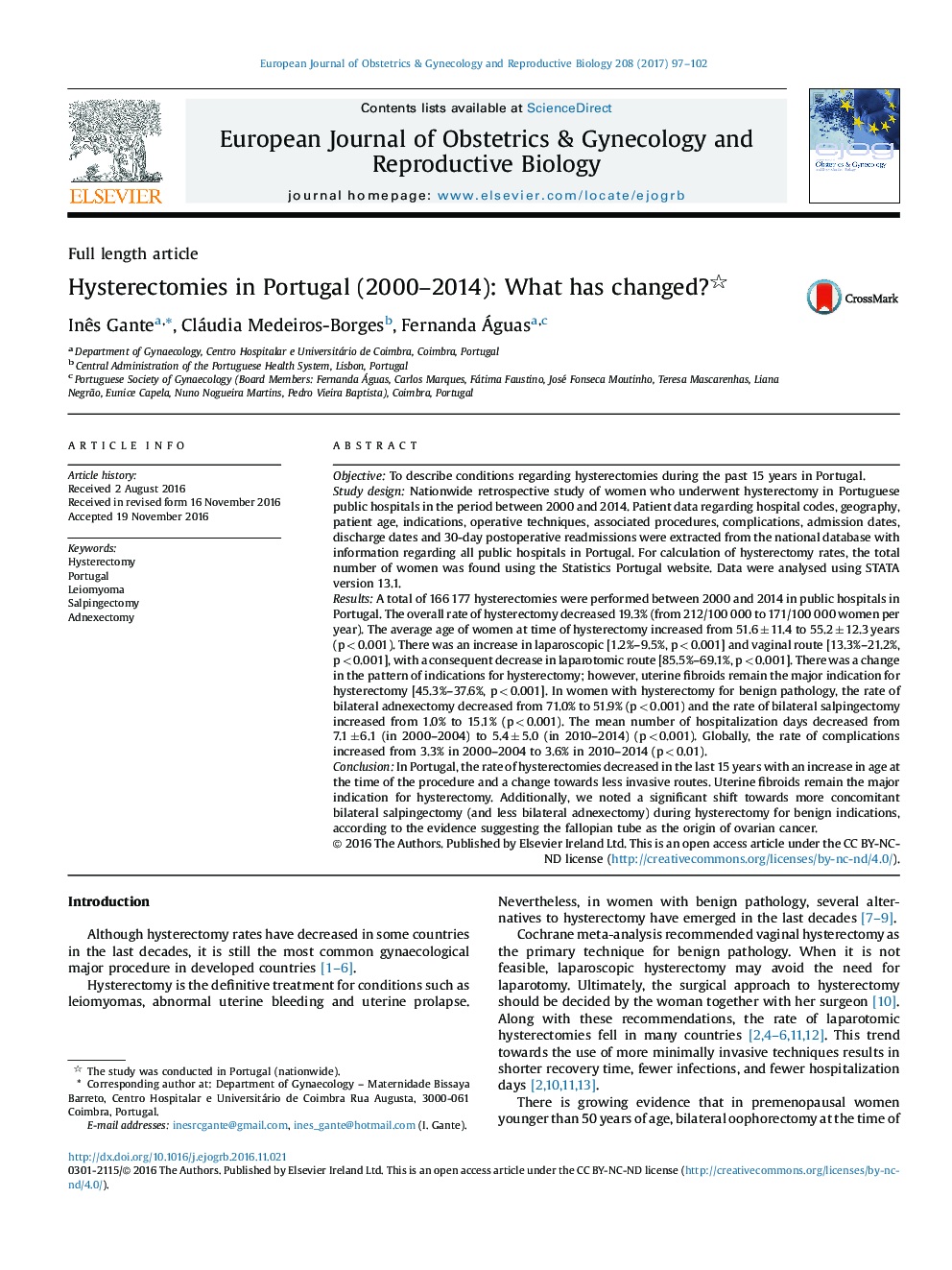| کد مقاله | کد نشریه | سال انتشار | مقاله انگلیسی | نسخه تمام متن |
|---|---|---|---|---|
| 5689609 | 1599773 | 2017 | 6 صفحه PDF | دانلود رایگان |
ObjectiveTo describe conditions regarding hysterectomies during the past 15 years in Portugal.Study designNationwide retrospective study of women who underwent hysterectomy in Portuguese public hospitals in the period between 2000 and 2014. Patient data regarding hospital codes, geography, patient age, indications, operative techniques, associated procedures, complications, admission dates, discharge dates and 30-day postoperative readmissions were extracted from the national database with information regarding all public hospitals in Portugal. For calculation of hysterectomy rates, the total number of women was found using the Statistics Portugal website. Data were analysed using STATA version 13.1.ResultsA total of 166 177 hysterectomies were performed between 2000 and 2014 in public hospitals in Portugal. The overall rate of hysterectomy decreased 19.3% (from 212/100 000 to 171/100 000 women per year). The average age of women at time of hysterectomy increased from 51.6 ± 11.4 to 55.2 ± 12.3 years (p < 0.001). There was an increase in laparoscopic [1.2%-9.5%, p < 0.001] and vaginal route [13.3%-21.2%, p < 0.001], with a consequent decrease in laparotomic route [85.5%-69.1%, p < 0.001]. There was a change in the pattern of indications for hysterectomy; however, uterine fibroids remain the major indication for hysterectomy [45.3%-37.6%, p < 0.001]. In women with hysterectomy for benign pathology, the rate of bilateral adnexectomy decreased from 71.0% to 51.9% (p < 0.001) and the rate of bilateral salpingectomy increased from 1.0% to 15.1% (p < 0.001). The mean number of hospitalization days decreased from 7.1 ± 6.1 (in 2000-2004) to 5.4 ± 5.0 (in 2010-2014) (p < 0.001). Globally, the rate of complications increased from 3.3% in 2000-2004 to 3.6% in 2010-2014 (p < 0.01).ConclusionIn Portugal, the rate of hysterectomies decreased in the last 15 years with an increase in age at the time of the procedure and a change towards less invasive routes. Uterine fibroids remain the major indication for hysterectomy. Additionally, we noted a significant shift towards more concomitant bilateral salpingectomy (and less bilateral adnexectomy) during hysterectomy for benign indications, according to the evidence suggesting the fallopian tube as the origin of ovarian cancer.
Journal: European Journal of Obstetrics & Gynecology and Reproductive Biology - Volume 208, January 2017, Pages 97-102
